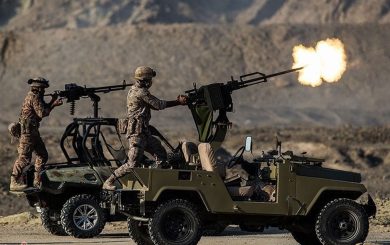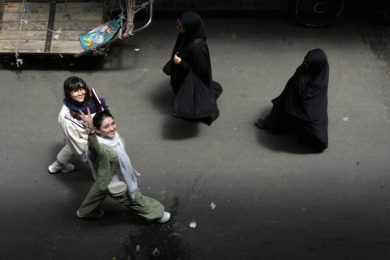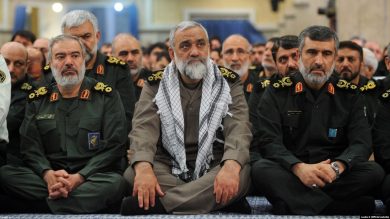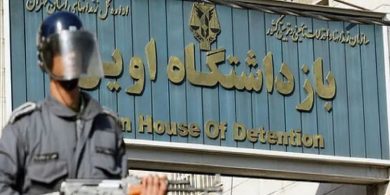In the heart of Iran, where repression has long silenced many, a powerful voice is rising—clear, unshakable, and led by women. From the bustling streets of Tehran to the rural towns of Kurdistan, Iranian women are refusing to be silenced. Defying mandatory hijab laws, standing against arrest and torture, organizing digital resistance, and leading nationwide protests, women have become the central force in the fight for freedom in the Islamic Republic.
The tragic death of Mahsa Amini in 2022, after being arrested by Iran’s morality police for allegedly violating hijab laws, ignited a flame that turned into a revolution. The chant “Women, Life, Freedom”—rooted in Kurdish feminist movements—echoed across Iran and reverberated around the world. This was not just a moment of mourning, but a loud declaration: Iranian women will not be silenced any longer.
This article explores:
• The historical and present-day roots of women’s resistance in Iran,
• The tactics used by the regime and the IRGC (Islamic Revolutionary Guard Corps) to silence them,
• The digital defiance of the new generation,
• Stories of women on the frontlines,
• And why Iranian women are essential to the future of a free Iran.
1. A Legacy of Resistance: Iranian Women Before and After the Revolution
Before 1979
Iranian women have long fought for their rights. In the early 20th century, they organized for education, voting rights, and labor protections. By the 1960s and 70s, women were entering universities, the workforce, and politics in increasing numbers.
After 1979
The Islamic Revolution, led by Ayatollah Khomeini, reversed many of these gains. Women were forced to wear hijab, lost custody rights, and were legally treated as second-class citizens. But even then, they resisted—protesting, organizing underground networks, and pushing back at every turn.
Every step of the way, the regime’s attempt to silence women only fueled their determination to speak louder.
2. The Role of the IRGC in Silencing Women
A. Who Are the IRGC?
The Islamic Revolutionary Guard Corps was founded to protect the Islamic regime. It is now a powerful military, economic, and intelligence force responsible for repressing dissent and maintaining ideological control.
B. Methods of Suppression
The IRGC targets women through:
• Surveillance: Tracking online activity and infiltrating protest networks.
• Arrests and Detention: Thousands of women have been arrested for protest or “improper hijab.”
• Torture and Forced Confessions: Many detained women report sexual violence and abuse in custody.
• Public Shaming: The regime broadcasts “confessions” on state TV to intimidate others.
• Harassment of Families: Pressuring or arresting family members of outspoken women.
Despite all of this, the resistance grows stronger.
3. Why Women Refuse to Be Silenced
A. Daily Oppression Breeds Political Consciousness
Iranian women live under constant surveillance and restrictions:
• They must obey strict dress codes.
• They cannot travel freely without a male guardian’s permission.
• Their testimony in court is worth half that of a man.
This everyday oppression turns ordinary acts—like dancing, removing hijab, or singing in public—into revolutionary defiance.
B. A Generation Born to Resist
Iran’s Gen Z is more connected, more outspoken, and less afraid than ever. Many were toddlers during the Green Movement in 2009 and teenagers when Mahsa Amini was killed. They grew up with the internet, saw global feminist movements, and are no longer willing to live in fear.
4. Digital Defiance: How Women Use Technology to Fight Back
Despite censorship, Iranian women have turned smartphones into weapons of truth. They:
• Share videos of protests and crackdowns.
• Use VPNs to access blocked platforms.
• Launch viral campaigns like #MyStealthyFreedom, #No2Hijab, and #FreeIran.
Social media platforms have become the new battleground, and women are winning the narrative.
5. Voices From the Frontlines
A. Narges Mohammadi
The human rights defender and Nobel Peace Prize laureate has been imprisoned multiple times by the regime. Even behind bars, she writes essays exposing abuses in prison.
B. Sepideh Gholian
A labor activist and journalist, Sepideh has been tortured, forced into false confessions, and re-arrested after chanting slogans in front of Evin Prison. Her defiance has inspired thousands.
C. Masih Alinejad
Living in exile, Masih continues to mobilize global attention to Iran’s abuses. Her campaigns, especially #WhiteWednesdays and #MyStealthyFreedom, have reached millions.
These women, and countless others whose names we may never know, carry the weight of a movement.
6. “Women, Life, Freedom”: More Than a Slogan
This rallying cry is rooted in intersectional feminism, calling for:
• Body autonomy,
• Dignity and safety,
• And a society free from authoritarian rule.
It’s not just a gender issue—it’s a vision for the entire nation’s liberation.
7. The Cost of Resistance
Many women have paid the highest price:
• Dozens killed during protests,
• Hundreds imprisoned,
• Thousands harassed or forced into exile.
But their bravery inspires others. Every arrest leads to more voices rising. Every martyr fuels the fire.
8. Global Support and Why It Matters
International support is crucial. The world can:
• Sanction IRGC officials responsible for gender-based violence.
• Support digital tools for secure communication in Iran.
• Amplify Iranian women’s stories in global media.
• Offer asylum to women at risk.
Silence helps dictatorships. Solidarity empowers movements.
Conclusion: The Revolution is Female
Iranian women are not waiting to be saved. They are saving themselves, leading a revolution not only for gender equality but for the soul of Iran. Their courage under repression, their refusal to be silent, and their vision for a free, democratic nation make them the undeniable future leaders of Iran.
Join Our Newsletter!
Stay informed with the latest updates, news, and ways to take action in the fight for justice and global security. Sign up now to get updates delivered straight to your inbox!





